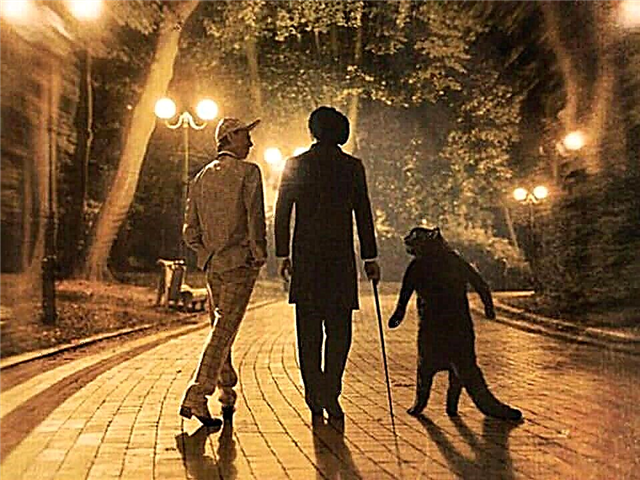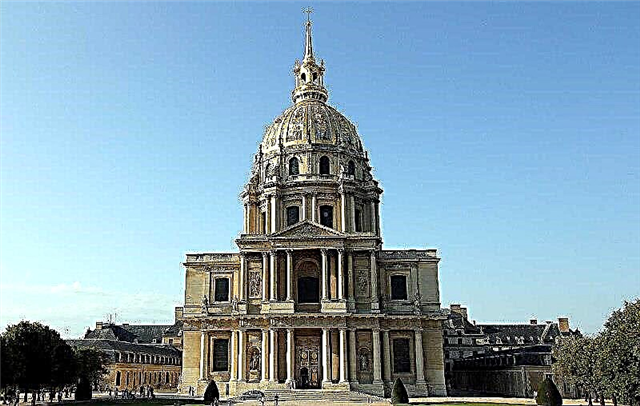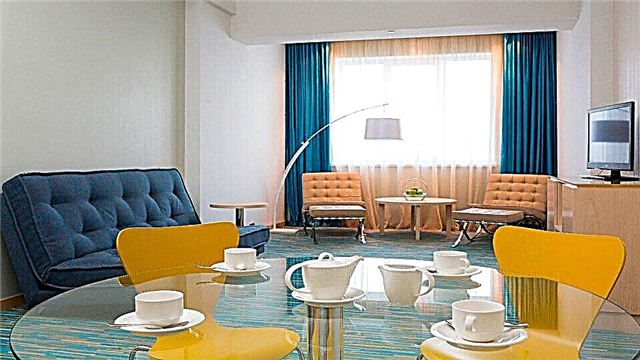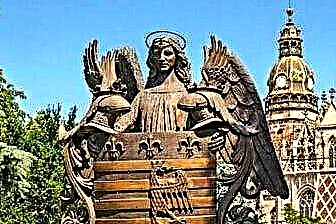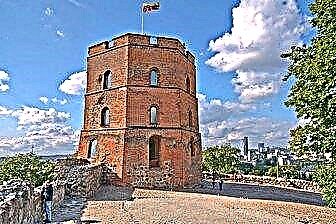There are cities in Europe that are bright, shiny and noisy, and there are cities like Vilnius - at first glance, modest, inconspicuous, but with a special atmosphere, interesting history and their own secrets. The tourist route here is not limited to the small area of the traditional Old Town. It leads further - to the bohemian district of Uzupis, in the fortress of the heyday of the Grand Duchy of Lithuania and magnificent baroque churches.
Vilnius was a thriving city already in the 15th-16th centuries. The markets were noisy here, missionaries of the Catholic orders preached, and the princes were in charge of state affairs. Many architectural monuments have survived from those times, and each of them can tell its own unique story.

The best hotels and hotels at affordable prices.
from 500 rubles / day
What to see and where to go in Vilnius?
The most interesting and beautiful places for walking. Photos and a short description.
Old city
The streets and squares of the Old Town are the place where the history of Vilnius began. In the depths of the medieval quarters, there are temples, souvenir shops and restaurants. The main attractions of the Lithuanian capital are concentrated here. The historical centers of the cities of Northern Europe are somewhat similar to each other, but each has its own peculiarities, so a walk through the old part of Vilnius will bring real pleasure to tourists.

Gediminas Tower
The tower is located on the Castle Hill and rises almost 50 meters above the city. The building is considered one of the symbols of the Lithuanian capital. The Gediminas Tower is the remains of the Upper Castle of the XIV-XV centuries. Inside there is a branch of the Lithuanian National Museum, where you can learn many interesting facts from the history of the city.

Sharp brama
One of the main attractions of Vilnius, a historical monument and a place of pilgrimage for Catholics from all over the Baltic States. The Sharp Brama (another name is the Ausros Gate) is a preserved part of the city wall with a chapel, which houses an important Christian shrine - the image of the Mother of God. The gate was erected at the beginning of the 16th century, in 1671 a wooden chapel appeared, later rebuilt from stone.

Town hall
The building of the city administration, executed in a rather modest classical manner. In the 19th century, concerts, balls, receptions and performances were held here. The building is mentioned in records of the 16th century, but at that time it looked more like the Gothic structures of Northern Europe. The Town Hall stands on one of the oldest squares in Vilnius. The Town Hall Square is surrounded by historic buildings and medieval streets.

Gediminas Avenue
The central street of Vilnius, which connects the four main squares of the capital: Lukishskaya, Self-government, Independence and Cathedral. The avenue was built in the middle of the 19th century, during the Soviet era it bore the name of Stalin and Lenin, then it was renamed in honor of Prince Gedemin. Mainly administrative and government offices are located on the street.

Pilies street
The oldest street in Vilnius, which runs through the entire city in the direction of Moscow. Kings, foreign guests and state ambassadors, as well as a traveling circus and touring musicians entered the city along it. Pilies Street is small - only 500 meters long, but this small square is home to many attractions. There are galleries, shops, museums and historic buildings.

Presidential palace
The official residence of the President of Lithuania, where the highest clergy of Vilnius used to be located. The building was built at the end of the 18th century according to the project of L. Gucevičius in the architectural style of the late classics. After Lithuania fell under the protectorate of the Russian Empire, the office of the Russian governor settled in the palace. It was visited by Russian, Polish and Prussian monarchs.

Vilnius University
The oldest university in Eastern Europe. Many famous personalities studied there: poets Juliusz Slowacki and Adam Mitskevich, astronomer Igor Gavrilov and others. The complex of university buildings is a mixture of Gothic, Classicism, Baroque and Renaissance. On the territory there is an old library, a botanical garden and a Catholic church. All these places can be explored with a guided tour.

Palace of the Radziwills
The complex is located in the Old Town on Vilniaus Street. It is sometimes called the “Lithuanian Louvre”, as it houses an art museum, where masterpieces of European fine art are exhibited. The palace was built in the late Renaissance style. It belonged to the most noble family of the Lithuanian principality - the Radziwills. This family was one of the first in the state to receive the title.

Palace of the Grand Dukes of Lithuania
Royal residence of the rulers of the Lithuanian state. The complex was first built at the Castle Hill in the 15th century, but the years of devastating wars practically wiped it off the face of the earth. The palace was restored in the 2000s. in its historical appearance, a museum was opened on its territory. It was the largest restoration project on a national scale, as it was associated with the revival of the statehood of Lithuania.

Cathedral of St. Stanislaus
The main Catholic cathedral of Vilnius has the status of a "minor basilica", granted by the Vatican. The temple is located in the city center next to the Castle Hill. On the territory of the cathedral, coronations of Lithuanian rulers took place, starting with Prince Vitovt. The architectural ensemble of the temple resembles the Greek pantheon, against its background a powerful octagonal bell tower with a clock stands out. It is believed that the altar of the pagan god of thunder Perkunas was located here earlier.

Church of St. Anne and Bernardine Church
A picturesque Gothic temple that adorns the Lithuanian capital with its flying and graceful architecture. The first wooden building of the church was built in the XIV century, later it was destroyed and rebuilt more than once. At the beginning of the 19th century, the temple was declared a historical monument. Nearby is the Bernardine Church of St. Francis of Assizzi, founded by the Franciscans in the 15th century. It is made in the architectural style of the Lithuanian Gothic.

Church of Saints Peter and Paul
An architectural monument in the Lithuanian Baroque style. On the site of the temple in the pagan era, the sanctuary of the goddess Milda was located. The Christian temple was founded on this site by the will of the Grand Duke Jagiello, the founder of the Jagiellonian dynasty. The modern building of the church was erected in the 17th century at the expense of the local magnate Kazimir Pats. The interior of the temple is distinguished by grace and beauty.

Church of St. Catherine
The temple is in the late Baroque style, which was built in the period from the 17th to the 19th centuries. The church belonged to the Benedictine Order. In Soviet times, there was a warehouse on its territory, so the building fell into severe desolation. After the formation of the independent Lithuanian state, large-scale restoration work began to restore the historical appearance of the temple. Nowadays, St. Catherine's Church is the cultural center of Vilnius.

St. Casimir's Church
The church is an architectural monument in the early Baroque style. The facade of the temple is decorated with decorative elements that give the building an elegant and festive look. The church dome is topped with a crown - a copy of the royal crown of the Grand Dukes of Lithuania. The church is named after the canonized representative of the Jagiellonian dynasty Casimir, who is considered the patron saint of Poland and Lithuania.

Church of St. John
Temple located on the territory of Vilnius University.It was built in the 15th century, and the work took over 40 years. Since the 16th century, the church has belonged to the Jesuit order. The building is crowned with a bell tower 68 meters high. On the territory of the temple, not only divine services were held, but also student protests, honoring of kings, theatrical performances.

Church of the Holy Spirit
Temple at an Orthodox monastery, the main cathedral of the Lithuanian Orthodox Church. At the end of the 16th century, there was a wooden church built at the expense of the wives of the Smolensk and Brest governors. After the adoption of the union, this temple remained the only Orthodox monastery on the territory of Vilna. At the beginning of the 18th century, Swedish troops destroyed the church, but it was rebuilt thanks to Peter I. In the middle of the 18th century, the temple burned down, but was revived again.

National Museum of Lithuania
The museum exposition was founded in the middle of the 19th century by the famous cultural figure E. Tyshkevich. By the end of the century, the funds had already collected more than 15 thousand exhibits. In the course of numerous wars and redistributions of the territory of Lithuania, the bulk of the collection ended up in Moscow. In the period between the two World Wars, almost the entire exposition had to be reassembled.

Lithuanian Art Museum
The museum complex includes several main branches: the National Art Gallery, the Museum of Decorative and Applied Arts, the Vilnius Picture Gallery and the Radziwills Palace. And also branches in other cities of Lithuania. Each branch and department has its own interesting exposition and functions as an independent museum.

Museum of Genocide Victims
Museum located in the former buildings of the NKVD and KGB. It is known that every European country of the former Socialist Bloc has its own museum, exposing the period when the state was under the rule of the USSR or in allied relations with it. Vilnius is no exception - the museum displays materials testifying to repressions and persecution of dissidents. And also there is an extensive propaganda activity.

Three crosses
A religious monument located in the city park on Lysaya Gora. It is very symbolic for Lithuania. The monument was erected in honor of the Franciscan monks who died from the pagans (this version has not been confirmed, there is only a legend). The first wooden crosses were installed at the beginning of the 17th century, then in 1740, 1916 and 1989. they were rebuilt from stone.

Vilnius TV Tower
The TV tower is the center of Lithuanian radio and television broadcasting. The structure is located on the territory of a residential area, reaching a height of 326.5 meters. Inside there is a panoramic restaurant, from where, in good weather, you can see the surroundings of Vilnius for tens of kilometers around. The TV tower was erected in the 1980s and is still the tallest structure in Lithuania.

Uzupis
One of the oldest quarters of Vilnius, where the creative and outrageous audience prefers to settle. Since the 16th century, it has been home to the urban poor, artisans, the working class and the poorest citizens. After the collapse of the USSR in the 90s. it was scary to even look into the territory of Uzupis. Over time, dilapidated and deserted buildings were chosen by artists, poets, actors, musicians, so the area was transformed. Now it is poetically called "Republic of Uzupis".

Park of Europe
The park is located outside Vilnius in the geographical center of Europe. It is an open-air museum complex, where dozens of sculptural compositions are exhibited. Masters from different countries took part in the creation of the exposition. The park covers an area of 55 hectares.To view the entire collection of sculptures, you need to move around by bike.

Trakai castle
At the beginning of the 14th century, Trakai was the capital of the Lithuanian principality. The grandiose and powerful princely castle reminds of those times. The building stands on an island surrounded by natural landscapes of incredible beauty. The castle was built in the medieval Romanesque style, the walls are 3.5 meters thick, and the harsh outlines of the towers remind of the past power of the Lithuanian lands.


